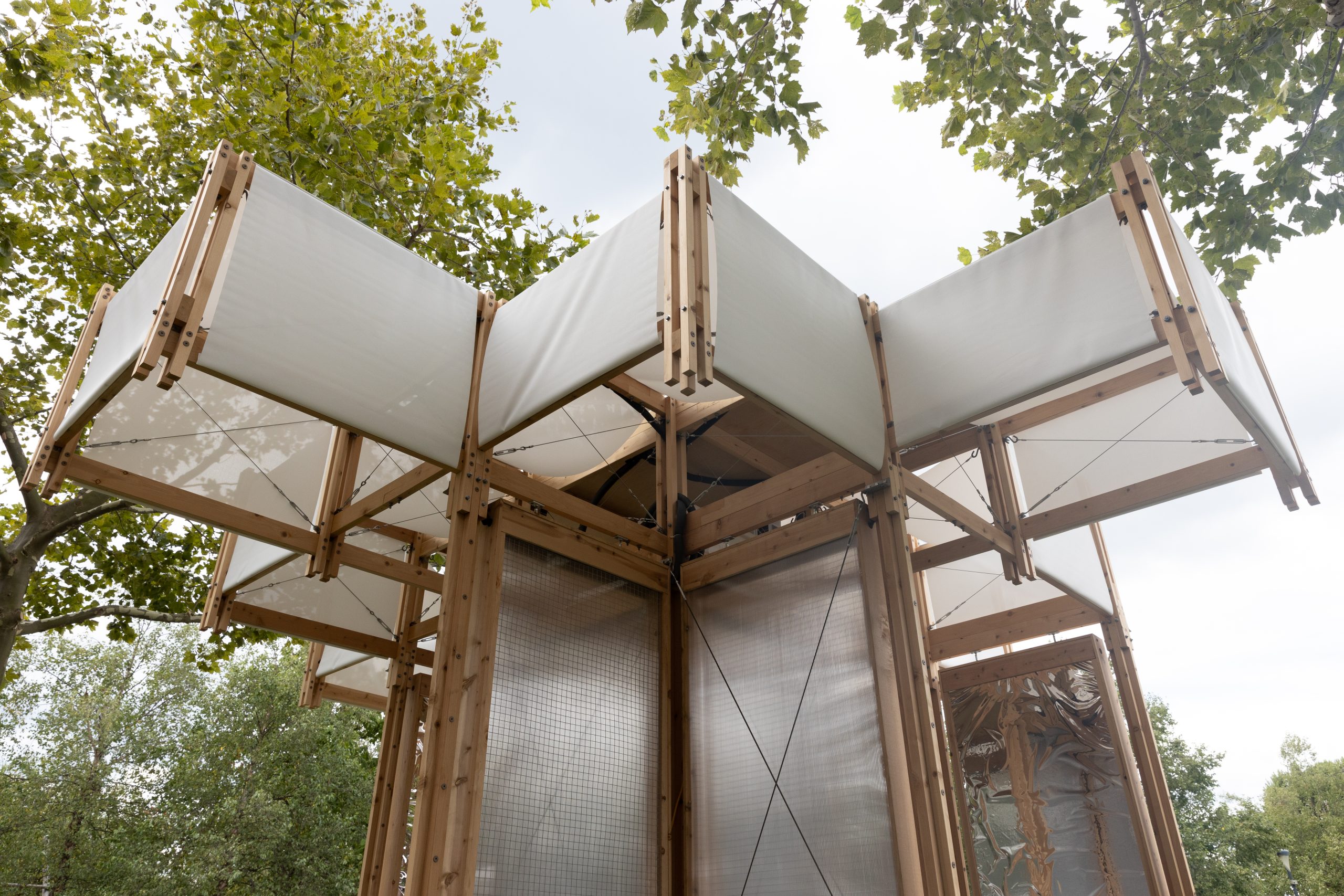2025 is on track to be one of the hottest years on record, with extreme heat increasingly threatening urban populations. KlimaKover, developed by Henning Larsen in collaboration with the University of Pennsylvania and AIL Research, offers a low-energy, scalable solution. The shelter uses radiant cooling technology to reduce heat stress exposure while using 10 times less energy than conventional air conditioning.
Prototype and public access
The first KlimaKover shelter is open to the public on Governors Island in New York through November 2025. Built from modular panels, the system can be scaled to suit a variety of urban settings.
“The Governors Island pavilion is just the first step,” said Jakob Strømann-Andersen, Director, Innovation and Sustainability, Henning Larsen. “We can imagine KlimaKover shading schoolyards, bus stops, street vendors, or construction sites, showing how low-energy cooling can scale across cities.”
Urban heat: risks and costs
Heatwaves are no longer rare. Traditional air-conditioning is expensive, energy-intensive, and largely unavailable in public spaces. Globally, AC accounts for nearly 10% of total electricity use and emits approximately 1 billion tons of CO₂ annually. Urban heat-related mortality carries annual costs of $200–300 per adult, comparable to the economic impact of air pollution. Millions of workers worldwide, particularly in construction and agriculture, are exposed to dangerous heat stress.
“KlimaKover will allow visitors arriving from New York City and the world to experience outdoor cooling. This is an important demonstration, paving the way to the wide scale adoption of low-energy cooling,” added Dorit Aviv, Architect and Assistant Professor of Architecture at the Weitzman School of Design, Director of the Thermal Architecture Lab.
Modular, low-energy cooling
KlimaKover is a modular system that can be mass-produced for approximately USD 75 per square foot. Constructed from 4’x4’ panels, it delivers radiant cooling and heating without condensation, can operate entirely on solar power, and requires no external water. The first prototype uses a silky cedar wood product, upcycles from waste streams, called Carbon Smart Wood, selected for ease of disassembly.
Radiant Cooling
The system circulates chilled water through microtubes in transparent radiant panels, drawing heat directly from the body. Fabric shading reduces heat exposure while maintaining open-air conditions – allowing natural breezes to enhance the cooling effect. The radiant panels can operate in hot and humid conditions, like New York City summers, due to an infrared transparent membrane that protects them from condensation. The pavilion is self-sufficient and low impact, requiring no additional energy infrastructure.
“Research from our partners at the University of Pennsylvania shows that the panels start to cool your body within 5-7 minutes, when the effect becomes apparent, and by 20 minutes the cooling sensation is pronounced,” said Kritika Kharbanda, Head of Sustainability, Henning Larsen.
